Phosphorylation by Aurora kinase A facilitates cortical-cytoplasmic dynamics of Par-3 in asymmetric division of radial glia progenitors
- PMID: 40367180
- PMCID: PMC12077515
- DOI: 10.1126/sciadv.adq3858
Phosphorylation by Aurora kinase A facilitates cortical-cytoplasmic dynamics of Par-3 in asymmetric division of radial glia progenitors
Abstract
During asymmetric cell division (ACD) of radial glia progenitors (RGPs), the cortical polarity regulator Par-3 is detected in the cytoplasm colocalizing with dynein and Notch ligand DeltaD (Dld). What drives Par-3 to the cytoplasm and its impact on RGP ACD remain unknown. Here, we visualize cytoplasmic Par-3 using in vivo time-lapse imaging and find that Ser954 of zebrafish Par-3 is phosphorylated by Aurora kinase A (AurkA) in vitro. Expression of the nonphosphorylated mutant Par-3S954A dominant negatively affects embryonic development, reduces cytoplasmic Par-3, and disrupts the anteroposterior asymmetry of cortical Par-3 and Dld endosomes and, in turn, daughter cell fate. AurkA in mitotic RGPs shows dynamic pericentrosomal distribution that transiently colocalizes with cortical Par-3 preferentially on the posterior side. AurkA is both necessary and sufficient to increase cytoplasmic while decreasing cortical Par-3, disrupts Par-3 cortical asymmetry, and perturbs polarized Dld endosome dynamics. These findings suggest that AurkA regulates Par-3 cortical-cytoplasmic dynamics that is critical for ACD and daughter cell fate.
Figures

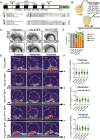
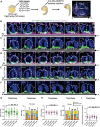
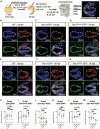


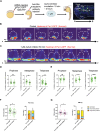
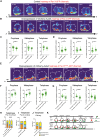
Similar articles
-
Polarized endosome dynamics engage cytoplasmic Par-3 that recruits dynein during asymmetric cell division.Sci Adv. 2021 Jun 11;7(24):eabg1244. doi: 10.1126/sciadv.abg1244. Print 2021 Jun. Sci Adv. 2021. PMID: 34117063 Free PMC article.
-
Antibody Uptake Assay for Tracking Notch/Delta Endocytosis During the Asymmetric Division of Zebrafish Radial Glia Progenitors.J Vis Exp. 2023 Jan 20;(191):10.3791/65030. doi: 10.3791/65030. J Vis Exp. 2023. PMID: 36744775 Free PMC article.
-
PCM1 conveys centrosome asymmetry to polarized endosome dynamics in regulating daughter cell fate.bioRxiv [Preprint]. 2024 Jun 18:2024.06.17.599416. doi: 10.1101/2024.06.17.599416. bioRxiv. 2024. PMID: 38948739 Free PMC article. Preprint.
-
How radial glia progenitor lineages generate cell-type diversity in the developing cerebral cortex.Curr Opin Neurobiol. 2025 Aug;93:103046. doi: 10.1016/j.conb.2025.103046. Epub 2025 May 17. Curr Opin Neurobiol. 2025. PMID: 40383049 Review.
-
A Scoping Review of the Observed and Perceived Functional Impacts Associated With Language and Learning Disorders in School-Aged Children.Int J Lang Commun Disord. 2025 Jul-Aug;60(4):e70086. doi: 10.1111/1460-6984.70086. Int J Lang Commun Disord. 2025. PMID: 40653909 Free PMC article.
References
-
- Yong K. J., Yan B., The relevance of symmetric and asymmetric cell divisions to human central nervous system diseases. J. Clin. Neurosci. 18, 458–463 (2011). - PubMed
MeSH terms
Substances
Grants and funding
LinkOut - more resources
Full Text Sources
Medical
Miscellaneous

